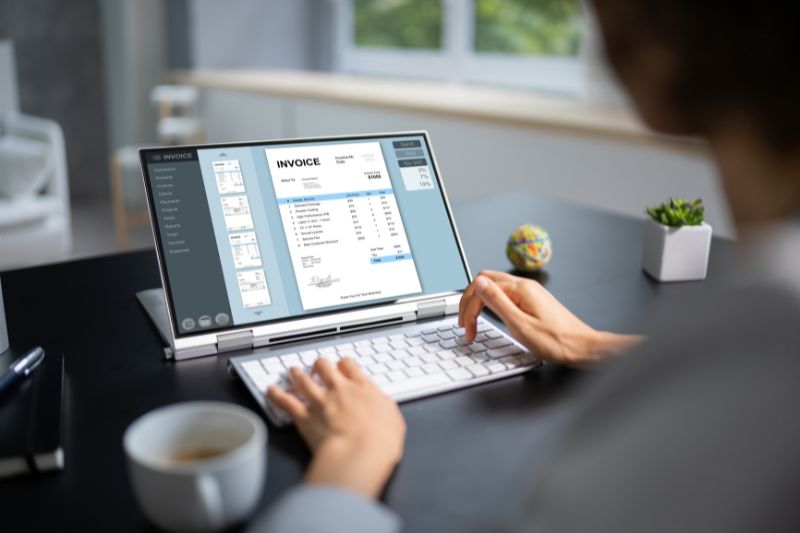How To Start A Tax Preparation Business: Three- Month Plan

The demand for tax preparation services is steadily growing year-on-year despite taxpayers having access to e-filing and an easier submission process. In 2023, tax preparation was valued at USD 43,982 million, with an increase of 5.9% predicted over the next five years. [1]
Despite this, many accounting professionals face a challenge: How to transition into offering full scale tax prep services without getting lost in the complexity of setup, certifications, and operations.
We aim to tackle this challenge by presenting a clear, actionable plan to achieve this transformation – in just three months.
Why take on this opportunity?
Starting your own tax preparation business doesn’t just enhance your skills; it opens up a consistent revenue stream and enables you to build better client relationships, positioning you as an expert in an industry filled with complexities and governance.
Pointedly, a tax business has the potential to bring clients to your doorstep, seeking your expert tax knowledge and ability to represent them in IRS interactions.
With a streamlined 3-month roadmap, you can efficiently set up your business as a professional tax preparer and start servicing clients as early as the next tax season.
Start your tax preparation business in three months
Successful implementation depends on manageable, actionable steps that lead to results. By the end of the three months you have the certifications, tools, and workflows in place to confidently run your tax practice. Let’s begin by outlining what you need to do each month.
Month 1: Education, Certification, and Planning
Month 1 will be all about getting to grips with what you need to do as a tax preparer and new business owner. You will spend your time reviewing any tax documentation and forms, deciding on important business structure issues and applying to be a certified tax preparer.
Understand tax preparation
Objective of this step: To learn as much as you can about tax preparation and the services you can offer.
- Research tax basics: Study individual taxes (Form 1040), small business taxes, and tax deductions or credits.
- Begin with IRS Tax Information for Individuals
- Next, take a tax course like Becker’s Certified Tax Representative
- Read IRS publications such as How to file your taxes and IRS Tax Topics
- Go through practice scenarios to test your knowledge and critical thinking skills by downloading IRS forms and using hypothetical data to complete them.
Obtain IRS certification (PTIN)
Objective of this step: To obtain your PTIN (Preparer Tax Identification Number) and the legal right to submit taxes on behalf of others
- Create an account at the IRS PTIN site. Most people can obtain a PTIN online within 15 minutes.
- Fill out the application with personal and professional details.
- Pay the application fee of $19.75, which is non-refundable.
- Receive your PTIN once your application is paid. You will receive this immediately.
Draft a business plan
Objective of this step: Create a roadmap for your business and attract potential investors.
- Define what services you’ll offer (individual tax prep, small business taxes, corporate taxes, or tax planning)
- Identify a target market (self-employed, freelancers, SBOs, large corporates).
- Estimate costs for software, licenses, marketing, professional insurance, and operating costs.
- Write out clear, simple, and achievable business goals, e.g., Acquire ten new clients a month.
- Use a free template to draft your business plan, such as SBA Business Plan Template.
Choose a business structure and register the business entity
Objective of this step: Decide how you’ll legally organize your business according to industry standards and to optimize tax breaks.
- Research the type of structure that will work best for your business (sole proprietor, S-Corp, C-Corp, Limited Liability Company)
- Register the business with your state Secretary of State’s Office.
- File for a DBA (if required) to use a business name that isn’t your legal name.
- Pay the applicable registration fees (these differ in each state).
Month 2: Business Setup and Technology

Month 1 was all about getting the basic structures in place that will allow you to work as a tax professional. Month 2 will be about getting licensed, insured, setting up your financial system, and choosing appropriate tools and technology. This will be a busy month with many key decisions to be made, driving your own business forward to the launch date.
Get an EIN (Employer Identification Number)
Objective of this step: The EIN is a nine-digit number issued by the IRS and used to identify the tax accounts of employers. The IRS uses the number to identify taxpayers who are required to file various business tax returns.
- Apply online at the IRS EIN application site.
- Fill out your business name, address, and entity type.
- Your EIN is issued immediately—save the confirmation letter.
Set up licensing and insurance
Objective of this step: Ensure compliance with regulations and protect your business
- Research state-specific tax preparer licensing requirements.
- Purchase professional liability insurance from accredited providers.
Set up your financial system
Objective of this step: Keep business and personal finances separate.
- Open a business bank account using your EIN and business registration number.
- Set up a payment processing system (Paypal, Stripe, Authorize.net)
Invest in tools and technology
Objective of this step: Tax professionals should use credible tools and technology that meet the highest security and data privacy standards. Choose professional tax software that meets this criteria and allows you to run your business efficiently. Use technology to automate as many workflows as possible.
- Invest in tried and tested tax preparation software like Turbotax Intuit or Sage Group.
- If tax preparation is just one part of your service offering, ensure that you use integrated accounting software that can help you collect data for your client’s tax returns, such as Intuit QuickBooks Online, Xero, Sage, or Microsoft Dynamics 365.
- Sign up for automation tools that can effectively do all your pre-accounting work and automate your tax workflow, such as Envoice. Automation technology drastically reduces the need for manual data capture and human intervention. Envoice also acts as a document management system, enabling you to keep all client correspondence in one place.
- Choose a CRM system for managing marketing campaigns, attracting leads, managing existing customer relationships and client follow ups.
Complete E-file registration
Objective of this step: Become an E-File IRS provider and complete federal tax returns on behalf of tax clients.
- Apply for an IRS e-Services Account online.
- Fill out your application with your PTIN and business details.
- Complete fingerprinting as required.
- Wait for IRS approval to prepare tax returns (This takes about 45 days)
- Receive your acceptance letter from the IRS after they have conducted a tax compliance check. You will be given an Electronic Filing Identification Number (EFIN) and recognized as an authorized e-file provider.
Month 3: Marketing, Testing, and Launch
While months 1 and 2 were all about getting the foundation of your business structure correct and applying for certification, licensing, and accreditation as a tax preparer, month 3 is where the fun starts. You’ll be working on getting new clients, testing your systems, and launching your own business!
Develop a marketing plan
Objective of this step: To promote your business and get new clients as soon as possible.
- Build a professional website and get help optimizing the site for SEO. Beginners can use platforms like Wix or Squarespace to launch user-friendly websites.
- Sign up for Google My Business by creating a profile allowing local clients to find your business.
- Use social media effectively by signing up for a LinkedIn account to share tax tips and updates with potential clients.
- Participate in local networking opportunities by attending small business seminars and conferences.
- Run paid ads through Google Ads targeting specific clilent demographics.
Test your processes, systems, and workflows
Objective of this step: Ensure that your business can flow smoothly once you acquire new clients and pick up on any potential gaps, bottlenecks, and inefficiencies.
- Run test cases with tax software using sample data.
- Test your client onboarding process (e.g., document upload, scheduling).
- Perform mock returns to practice your workflow end-to-end.
Review technology and automation tools
Objective of this step: This is to ensure that the technology you have in your business helps you deliver an excellent outcome for your clients – accurate tax returns.
- Make a list of your technology and assess how it’s working and if it’s adding enough value vs. the cost of the software.
Your list might look something like this:
| Task | Tool | Purpose | Average Rating by Team |
|---|---|---|---|
| Tax Prep | Drake, Intuit, Sage | Prepares and e-files tax returns | 8/10 |
| Document Management | Envoice, TaxDome, SmartVault | Securely stores client documents | 9/10 |
| Pre-accounting automation | Envoice | Automation of pre-accounting functions | 9/10 |
| CRM | Hubspot CRM | Tracks client interactions and follow-ups. | 9/10 |
| Scheduling | Calendly | Allows clients to book meetings online. | 7/10 |
| E-signatures | DocuSign, HelloSign | Collects legally binding electronic signatures. | 7/10 |
| Payment processing | Paypal, Stripe | Accepts payments securely. | 9/10 |
| Marketing | Google My Business, Mailchimp | Promotes your services and engages potential clients. | 8/10 |
Launch and begin taking in new clients
Objective of this step: Begin offering services, excellent customer service, and gathering feedback for improvement.
- Follow up on leads from your marketing campaigns, arranging initial consultations and follow-up meetings.
- Provide your clients with excellent customer service, increasing the reputation of your brand and positioning yourself as an industry expert.
- Gather testimonials from satisfied clients and publish them on your website.
By the end of month 3, you’ll be in a position to engage customers and start growing your business actively, and you’ll have achieved this by following our step-by-step actionable plan for getting your tax preparation business started in just 3 months!
In Summary
The tax preparation industry still has room for new entrants into the market between now and 2030. However, most professionals find it challenging to start their own business or transition to offering tax preparation services. We showed that it is possible to make this transition smoothly and successfully in three short months.
What makes this approach so different? It’s practical, time-efficient, and tailored for accounting professionals who want to hit the ground running.
If you’re ready to begin your journey to a sustainable income, a thriving tax preparation firm, and becoming a tax expert, then start now at the first step, Understand Tax Preparation and you’ll be well on your way to servicing clients by tax season.
References:
1. Tax preparation market share
STAY ALWAYS TUNED
Subscribe to newsletter
Still not sure?
- Don’t spend time on manual work
- Streamline bookkeeping processes with AI
- Automate invoice processing
- Integrate with the tools you rely on every day











